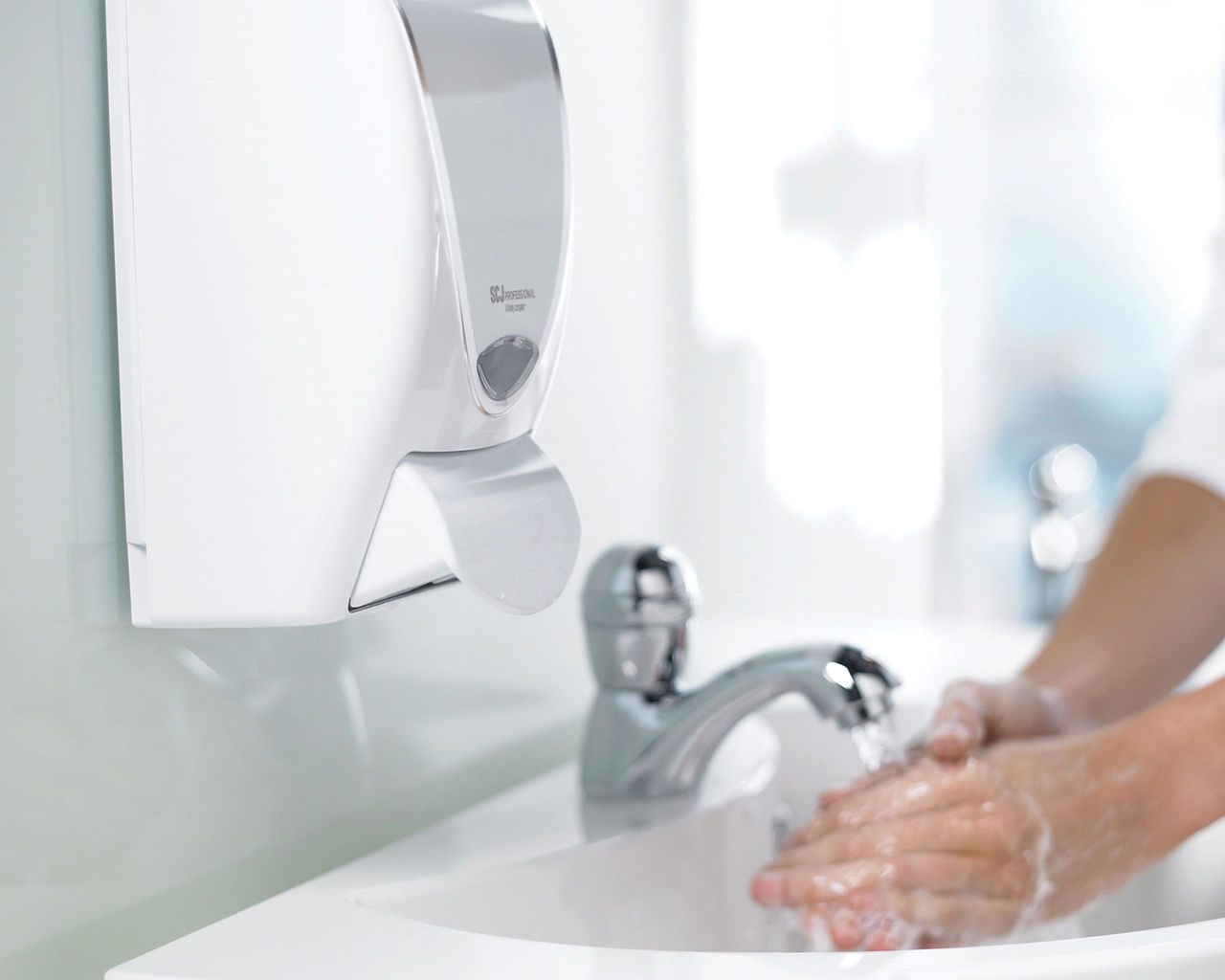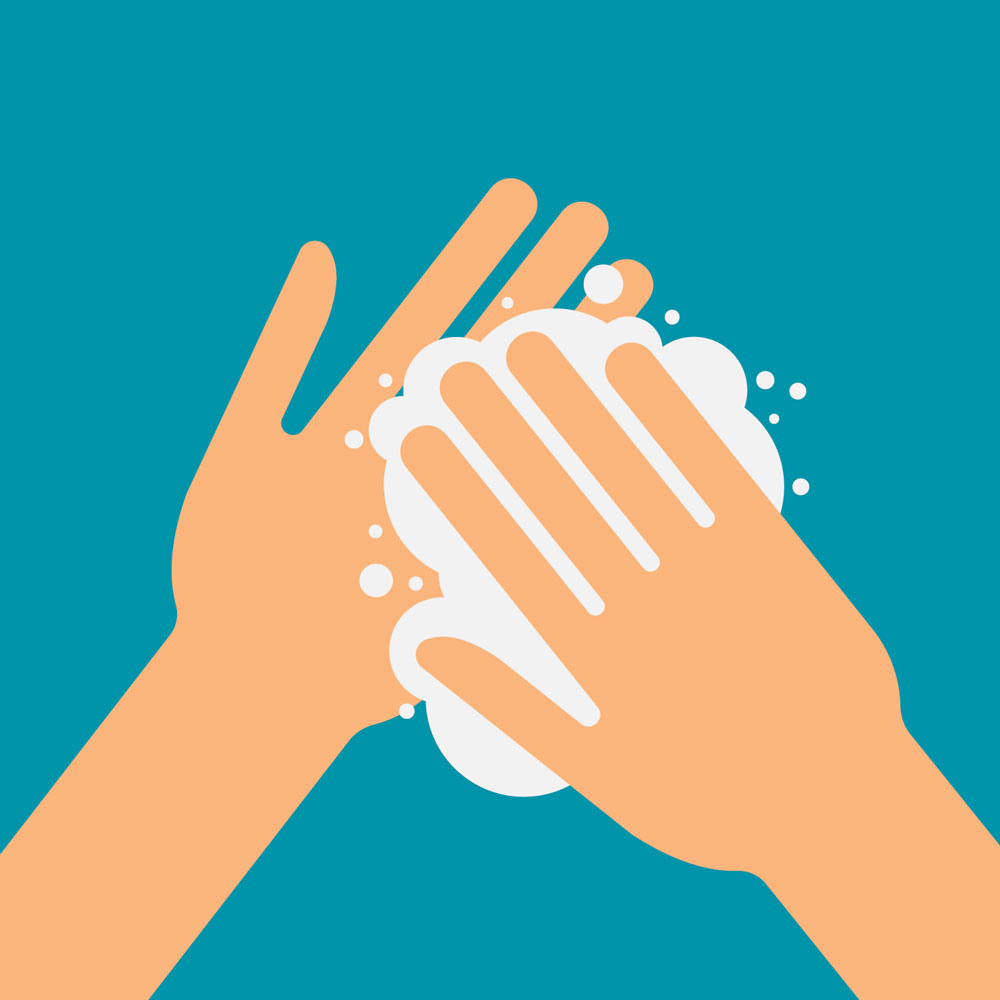In this article
How to wash your hands of flu prevention
The bad news is that the flu season is not over yet. So you still have a responsibility to your staff and your business to help to keep flu under control. The good news is that proper hand hygiene can make a huge difference to the spread of not just flu, but of 1 in 5 respiratory infections. So give your hands a good wash, then read on.

20% of the population are infected with seasonal flu every year.¹ That can make flu a significant factor in staff absences, which can have a major impact on productivity. So flu is not something to be sniffed at. But surprisingly, sniffles, coughs and sneezes are not the only way flu and other germs may spread – because 80% of all infections are transmitted by hands.
When you realise that we all have between two million and ten million bacteria from our fingertips to our elbows, and that those germs can stay alive there for up to three hours, it’s no wonder that hands are a major source of transmission.
Fortunately, even though you can’t see the germs, you can get rid of them – because the solution is in your hands.
Making a clean break
The causes of infection with flu or many other illnesses are best described as a chain. The hands of infected people carry germs, which are then left behind on every surface they touch. When those surfaces are door handles, stair rails or similar places that many others will also touch, it doesn’t take long for the germs to find a new person to cling to and infect.
So the key to reducing the risk of infection is to break the chain.
To do that, it’s important to realise that it’s not the surface that’s spreading the infection, but the hands. Even if a surface is disinfected, it will be populated with new germs as soon as the next infected person touches it.
That’s why targeted hand hygiene is so important.
As experts in industrial hand hygiene solutions, SC Johnson Professional recommend a handful of ways to reduce infection and help your business fly through the flu season with minimum disruption to productivity.
Pointing the finger
The first thing to be aware of is where the risk of transmitting infection from hands is at its highest. SC Johnson Professional have identified these eight key moments:
- Entry and exit from a facility or venue
- Using the washroom
- Before and after touching common surfaces
- Before preparing food
- Before eating food, especially with fingers
- Before and after moving from a workstation
- After coughing, sneezing or nose blowing
- After handling or disposing of refuse

If you can place your hand hygiene products to target these key moments, then people are more likely to take notice, wash their hands whenever it’s essential, and so reduce the transmission risk.
Don’t get irritated
Sometimes more frequent handwashing can lead to dry, chapped or irritated skin. That can put people off washing their hands properly, so infection starts to spread again.
SC Johnson Professional recommend using a fragrance-free moisturising and restoring cream alongside soap can help to keep skin – and therefore people – healthy. It’s not part of a beauty routine. It’s a weapon in the battle against bugs.
To find out if your workplace is a hand hygiene health hazard or a sparkling example, why not ask your usual ERIKS contact to arrange a free site audit from SC Johnson Professional? You’ve got nothing to lose except ten million bacteria.
Now wash your hands please
A quick splash under the tap is not enough to effectively remove bacteria from hands. Good hand hygiene includes:
- Using a good handwashing technique, ensuring soap is spread all over and all around hands, fingers and thumbs
- Washing for at least 15 seconds before rinsing off the soap
- Turning off the tap with your elbow if possible
- Drying hands thoroughly Washing frequently with soap, and especially
- before and after eating
- after touching potentially contaminated surfaces (door handles, light switches etc.)
- after coughing or sneezing
- after using the washroom
[See the 8 Key Moments to guide you further on when to wash hands]
¹. Blanchet Zumofen MH, Frimpter J, Hansen SA. Impact of Influenza and Influenza-Like Illness on Work Productivity Outcomes: A Systematic Literature Review. Pharmacoeconomics. 2023 Mar
For more information on Personal Hygiene & Safety Equipment, you can contact your local ERIKS Service Centre, who will be happy to discuss your options.
#SCJohnsonProfessional #ERIKS #LetsMakeIndustryWorkBetter #FluPrevention #Handwashing

